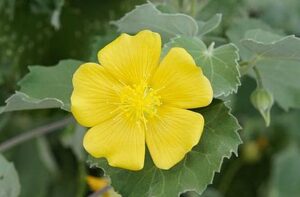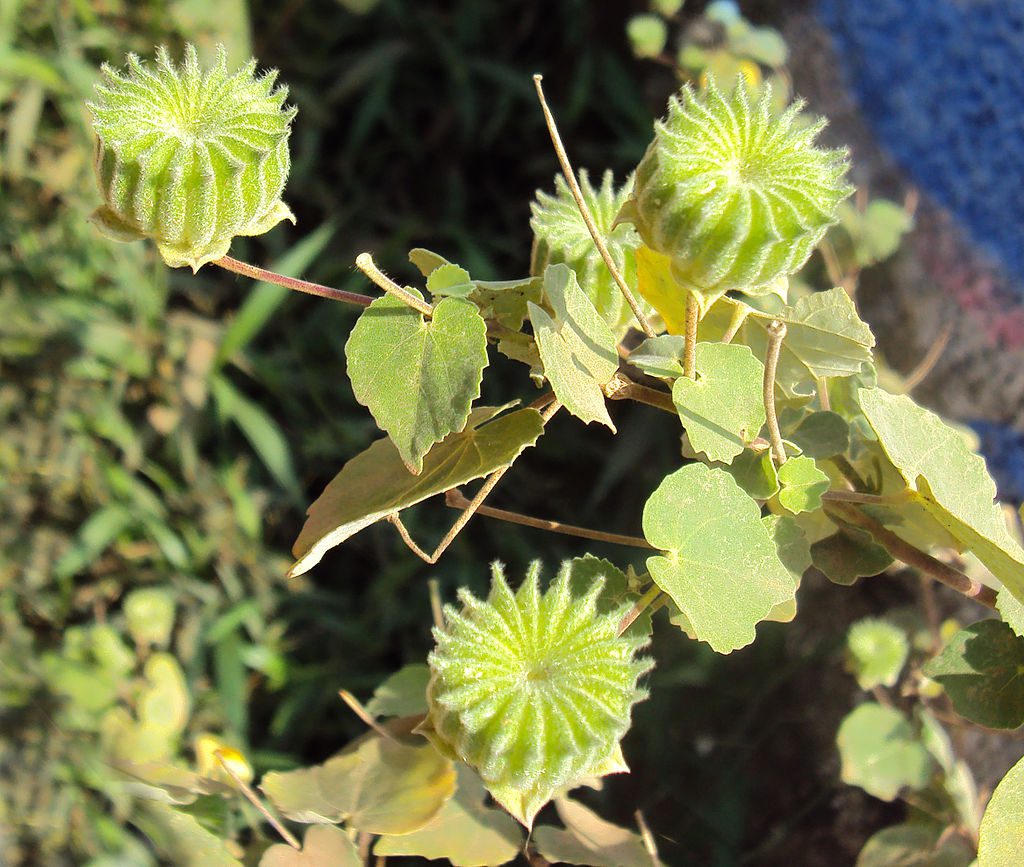Herb
Atibala (Abutilon indicum) Herb Ayurvedic Overview
Atibala consists of the root of Abutilon indicum (Linn.) Sweet (Fam. Malvaceae). It is a medium-sized, branched perennial shrub up to 2 meters in height. It has golden-yellow flowers, mainly flowering throughout the year and found abundantly throughout the hotter parts of India, as a common weed on roadsides and other waste places in plains and hills, up to an elevation of 600 m.
Abutilon indicum is rich in medicinal properties and provides multiple health benefits to an individual. It is rich in anti-diabetic, anti-inflammatory, anti-diarrheal, analgesic, anti-fungal, diuretic, hepatoprotective, laxative, immunomodulatory properties. Mucilage present in the plant acts as diuretic and demulcent, thus protects the mucous membrane, urinary system and helps in gastro-intestinal inflammations, lesions, and ulcers.
Atibala (Abutilon indicum) plant is very much used in Ayurvedic medicines. The bark, root, leaves, flowers, and seeds are used for medicinal purposes for different diseases. The properties of Atibala help manage conditions like boils and ulcers, fever, syphilis, cataract, diarrhea, leg pains, uterus displacement, snakebite, piles, gonorrhea, cough, hemorrhagic septicemia, leprosy, dry cough, and bronchitis, etc. The extract of Atibala is antimicrobial and astringent and hence helps reduces the appearance of pimples and boils and reduces oiliness from the skin.
Table of Contents
Scientific Classification of Atibala (Abutilon indicum):
- Kingdom: Plantae – Plants
- Subkingdom: Tracheobionta (Vascular plants)
- Superdivision: Spermatophyta (Seed plants)
- Division: Magnoliophyta (Flowering plants)
- Class: Magnoliopsida (Dicotyledons)
- Subclass: Dilleniidae
- Order: Malvales
- Family: Malvaceae – Mallow family
- Genus: Abutilon Mill. – Indian mallow
- Species: Abutilon indicum (L.)
Atibala (Abutilon indicum) Synonyms:
- Sanskrit: Kankatika, Rsyaprokta
- Assamese: Jayavandha, Jayapateri
- Bengali: Badela
- English: Indian mallow
- Gujrati: Kansaki, Khapat
- Hindi: Kanghi
- Kannada: Shrimudrigida, Mudragida, Turube
- Malayalam: Uram, Katuvan, Urubam, Urabam, Vankuruntott, Oorpam, Tutti
- Marathi: Chakrabhendi, Petari, Mudra
- Oriya: Pedipidika
- Punjabi: Kangi, Kangibooti
- Tamil: Tutti, Thuthi
- Telugu: Tutturubenda
Atibala (Abutilon indicum) Description:
 a) Macroscopic: Atibala roots are fairly long, with several lateral branches. It has 1.5-2 cm in diameter, and the color is light brown. The outer surface is smooth with dots like lenticels. The bark of Atibala is thin and can be easily peeled off, odor, feeble, taste, astringent and bitter.
a) Macroscopic: Atibala roots are fairly long, with several lateral branches. It has 1.5-2 cm in diameter, and the color is light brown. The outer surface is smooth with dots like lenticels. The bark of Atibala is thin and can be easily peeled off, odor, feeble, taste, astringent and bitter.
b) Microscopic: The transverse section of the root shows a thin cork of 4-7 tangentially, which are single-layered, elongated rectangular cells, cork cambium, and at the lenticel regions, it followed by 3-4 layers of the secondary cortex of which is almost rectangular cells having small clusters of calcium oxalate. The phellogen has 4-5 layers of thin-walled cells of the cortex; some cortex cells are crushed, small starch grains, having 6-9 µ in diameter.
The wood is composed of vessels, wood fibers, and wood parenchyma. The medullar rays vessels varied in diameter and arranged in radial groups of 3-4; some cells show tyloses formation, parenchyma thick-walled, and slightly wider than fiber cells.
Identity, Purity, and Strength of Atibala (Abutilon indicum):
- Foreign matter Not more than 2 percent, Appendix 2.2.2.
- Total Ash Not more than 8 percent, Appendix 2.2.3.
- Acid-insoluble ash Not more than 3 percent, Appendix 2.2.4.
- Alcohol-soluble extractive Not less than 3 percent, Appendix 2.2.6.
- Water-soluble extractive Not less than 9 percent, Appendix 2.2.7.
Chemical Constituents of Atibala (Abutilon indicum):
The leaves of Atibala (Abutilon indicum) contain tannin, amino acids, glucose, fructose, mucilage, galactose, gallic acid sesquiterpene alkaloids, triterpenoids, saponins, cardiac glycosides, flavonoids, sterols, and asparagine (11.5 %).
Ayurvedic Properties and Action of Atibala (Abutilon indicum):
- Rasa: Madhura
- Guna: Snigdh
- Virya: Shita
- Vipaka: Madhura
- Karma: Grahi, Vatahara, Balaya, Varishya, Kantivardak, Ojjovardhak. Shukkra vridikara
Ayurvedic Formulation made by Atibala (Abutilon indicum):
The formulations of Atibala includes: Bala Taila, Narayana Taila, Maha Narayana Taila, Punarnavadyarishta, Gandha Taialm.
Therapeutic Uses of Atibala (Abutilon indicum):
The main therapeutic uses of Atibala are Meha, Raktapitta, Dahahara, Chardihara, Kantivardak, Kshatahara.
Dose of Atibala (Abutilon indicum):
3-6 gm of the drug in powder form.
Reference:
Ayurvedic Pharmacopeia of India.


